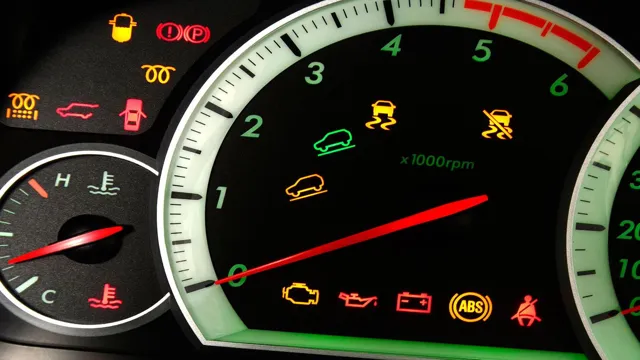Get Charged Up: A Beginner’s Guide to Car Electrics
Have you ever felt like a car is a complex machine that you cannot fully comprehend? Do you find yourself lost when it comes to understanding car electrics? If you’re a beginner, the world of car electrics can feel overwhelming and confusing. But fear not, this beginner’s guide is here to help! Car electrics control everything from the lights, wipers, and air conditioner to the engine, transmission, and brakes. Understanding car electrics can save you from costly repairs and help you diagnose problems in your car.
This guide will provide you with a basic understanding of car electrics and the essential components involved. So let’s get started! Imagine a car’s electrical system as a human body’s circulatory system; the battery acts as the heart, and the cables as veins and arteries. Just as the heart pumps blood through the veins to different parts of the body, the battery’s power is distributed through the cables to different components of the car.
We’ll delve deeper into the different components involved in car electrics, such as the alternator, starter motor, and fuse box. We’ll also cover how to test the battery’s voltage, jump-starting a car, and troubleshooting common electrical problems. By the end of this guide, you’ll have a solid understanding of car electrics and be more confident in diagnosing issues in your car.
So buckle up and let’s dive into the world of car electrics!
Understanding Car Electrics
If you’re a beginner in the world of car electrics, it may seem overwhelming at first. But fear not, because understanding car electrics can be broken down into a few basic components. Firstly, a car’s electrical system consists of a battery, alternator, starter motor, and a network of wires and fuses.
The battery’s job is to provide the initial power to start the car, while the alternator keeps the battery charged and powers the electrical system once the car is running. The starter motor is responsible for turning the engine over and getting it started. The wires and fuses transmit electricity throughout the car and protect the system from overload.
Additionally, modern cars have a variety of electrical components such as sensors, actuators, and computer modules that work together to ensure optimal performance. By understanding these basic components and how they work together, you’ll be better equipped to diagnose and troubleshoot any issues that may arise with your car’s electrical system.
Overview of Car Electrical System
When it comes to understanding your car’s electrical system, there are a few key things to keep in mind. First and foremost, your car’s electrical system is responsible for powering everything from the headlights and radio to the spark plugs and starter motor. It’s a complex network of wires, fuses, and switches that work together to deliver power where and when it’s needed.
To get a better understanding of how it all works, it can be helpful to think of your car’s electrical system like the circulatory system in your body. Just like how your heart pumps blood through your veins and arteries to keep your body functioning properly, your car’s alternator, battery, and fuses work together to keep a steady flow of electricity running throughout the car. By keeping up with routine maintenance and being proactive about fixing any electrical issues as they arise, you can ensure that your car stays in top working condition for years to come.

Components of Car Electrical System
When it comes to car electrics, many people might feel overwhelmed by the complexity of the system. However, understanding the various components of a car electrical system can make everything much easier. The battery is a critical component of the car’s electrical system as it powers it.
Additionally, the alternator produces electrical power while the engine runs and recharges the battery. The starter motor brings the engine to life through the electrical charge it receives from the battery. Other crucial parts of a car’s electrical system include the ignition system, which provides the spark to the spark plugs, and the fuses, which are safety devices that control the flow of electricity.
Understanding the various components of a car’s electrical system helps car owners determine potential problems and make informed decisions when maintaining their vehicle.
Common Car Electrical issues
If you’re a beginner in car electrics, it’s essential to know that electrical issues can significantly affect your vehicle’s performance. The most common electrical problems that you may encounter include a faulty battery, malfunctioning alternator, damaged starter motor, and wiring issues. The battery is usually the primary cause of car electrical problems, and it may get drained due to leaving your lights on, faulty charging systems, or cold weather.
If you notice dim lights or slow-starting when turning on the engine, it’s a sign that your alternator may not be functioning correctly. The starter motor may also stop working, causing your car not to start at all. Finally, if you notice unusual smells or burnt out fuses, it may indicate that there are wiring issues in your car, leading to potential safety hazards.
As a beginner, it’s best to consult a professional technician who can diagnose and fix the electrical issues in your car to avoid causing more significant problems.
Dead battery
A dead battery is one of the most common car electrical issues that drivers face. There is nothing more frustrating than getting into your car and realizing that the battery is dead. The good news is that this issue is usually easy to fix.
Jump-starting the battery is the most common solution. However, it is important to remember that a dead battery could be a symptom of a more significant problem. A worn-out alternator or a faulty starter could be the underlying issue.
In this case, the battery would need to be replaced instead of just jump-starting it. To prevent a dead battery from happening, it is recommended to check your car battery regularly and have it replaced every three to five years. Additionally, avoid leaving the lights or other electronics on when the engine is off, especially for an extended period.
With proper care and regular maintenance, you can avoid a dead battery and keep your car running smoothly.
Flickering lights
Flickering lights in your car can be a cause for concern, often indicating electrical issues that require attention. One of the most common reasons for flickering lights is a weak or dying battery. If the battery isn’t holding a charge as it should, it can cause your headlights, dashboard lights, and interior lights to flicker.
Another culprit could be a failing alternator. The alternator is responsible for keeping the battery charged while the engine is running. If it fails, it can cause your lights to flicker and die altogether, leaving you stranded.
It’s important to get your car’s electrical system checked by a professional at the first sign of trouble. Don’t ignore the warning signs, as electrical issues can be dangerous and lead to costly repairs down the line.
Blown fuses
Blown fuses can be one of the frustrating car electrical issues that any driver can encounter. A fuse is the protective barrier that defends the car’s electrical system from overloads, sudden surges, and short circuits. Once the fuse blows, it breaks the electrical connection between the electrical component and the power source, leaving the component non-functional.
The most common causes of blown fuses include a faulty electrical component, an overloaded electrical circuit, or a damaged fuse. To fix this issue, you need to find the faulty fuse and replace it with a new one. However, it’s crucial to pinpoint the root cause of the blown fuse instead of replacing it repeatedly, as it can further damage the electrical system.
Suppose you’re unsure of the issue causing blown fuses. In that case, it’s best to take your car to an experienced mechanic who has the necessary expertise, skills, and tools to diagnose and repair the issue.
Basic Car Electrical Maintenance
If you’re a beginner in car maintenance, tackling electrical repairs may seem daunting at first. However, it’s essential to keep your car’s electrical system functioning correctly for optimal performance and safety. One of the most crucial aspects of car electrical maintenance is checking and replacing the battery.
A dead battery can lead to starting problems and leave you stranded. It’s also important to inspect the wiring regularly and check for loose connections or frayed wires. Other essential parts of the electrical system that should be inspected include the alternator, starter, and spark plugs.
These parts play an important role in keeping your car running smoothly. By keeping up with regular inspections and basic maintenance, you can avoid expensive repairs down the road. With a little effort and knowledge, even beginners can keep their car’s electrical system in good condition.
Battery Maintenance
Battery maintenance is an important part of Basic Car Electrical Maintenance. Taking care of your car battery can help prolong its lifespan and prevent unexpected breakdowns. One of the simplest things you can do is to check the battery terminals and make sure they are clean and tight.
Dirty or loose terminals can cause poor electrical connections, leading to starting problems or even battery failure. Another tip is to check the battery’s water level if it’s not a maintenance-free battery. It’s vital to ensure the water level is not too low; otherwise, it can cause damage to the battery’s cells.
You can also use a voltmeter to measure the battery’s voltage, providing an indication of its condition. If the voltage reading is below the recommended level, it’s best to recharge or replace the battery as soon as possible. By following these basic battery maintenance guidelines, you can save yourself from costly repairs and keep your vehicle running smoothly.
Replacing fuses
If you own a car, knowing how to replace fuses is a critical basic maintenance skill. Fuses protect your electrical system from short circuits and overloads. Over time, they can blow due to wear and tear or by a faulty component.
When this happens, your car’s electrical functions, like lights and stereo, may stop working. Fortunately, replacing a fuse is a simple task that doesn’t require special skills or knowledge. First, locate your car’s fuse box, which can typically be found in the engine bay or under the dashboard.
Once you’ve found it, identify the fuse that has blown by checking its color or an indication on the fusebox cover. Then, remove the blown fuse using a fuse puller or pliers and replace it with a new one of the same amperage. It’s essential to use the correct amperage to prevent electrical damage or hazards.
Regularly checking your fuses and replacing them when needed can save you money on expensive repairs down the road.
Importance of Professional Help
If you’re a beginner when it comes to car electrics, it’s important to seek professional help if you’re unsure about anything. Messing around with the electrical system of your car without proper knowledge or experience can lead to serious harm, or even death. A professional mechanic can not only identify and solve any electrical problems your car may have, but they can also educate you on how to properly maintain your car’s electrical system.
It may be tempting to try and fix something yourself to save money, but in the long run, it’s not worth the risk. Trusting a professional to handle your car’s electrics will give you peace of mind and ensure that your vehicle runs smoothly and safely. So, if you’re a novice in car electrics, it’s best to leave it to the experts.
Conclusion
In conclusion, understanding car electrics may seem daunting, but with a few basic principles and a little knowledge, you’ll be well on your way to being a savvy auto electrician. And who knows, soon you might be able to fix your own car’s electrical problems without calling in the pros. Just remember to always practice safety first, as electricity can be dangerous if handled improperly.
So go ahead and take the plunge into the world of car electrics – it’s a shockingly electrifying experience!”
FAQs
What are the basic components of a car electrical system?
The basic components of a car electrical system are the battery, alternator, starter, and various wires and connectors.
How often should I have my car’s battery checked?
It is recommended to have your car’s battery checked at least once a year and replace it every 3-5 years, depending on its condition.
How do I know if my car’s alternator is malfunctioning?
Some signs of a malfunctioning alternator include dimmed headlights, warning lights on the dashboard, unusual noises, and difficulty starting the engine.
Can I install a new car stereo myself?
Yes, you can install a new car stereo yourself with the right tools and instructions, but it is recommended to consult a professional if you are not experienced in car electronics.
How can I prevent electrical problems in my car?
You can prevent electrical problems in your car by performing regular maintenance and inspections, using high-quality electrical components, and avoiding overloading the electrical system by adding too many aftermarket accessories.







